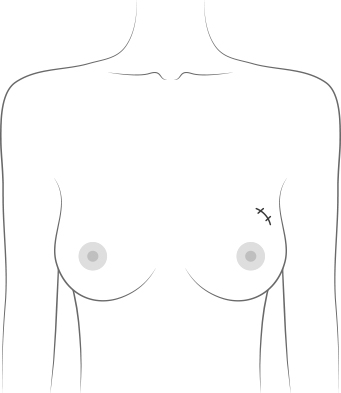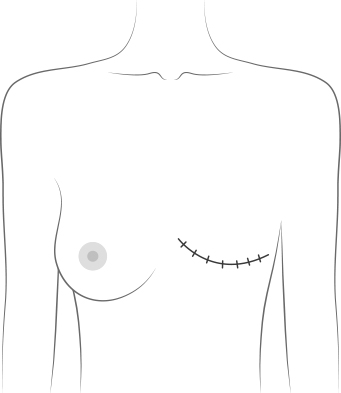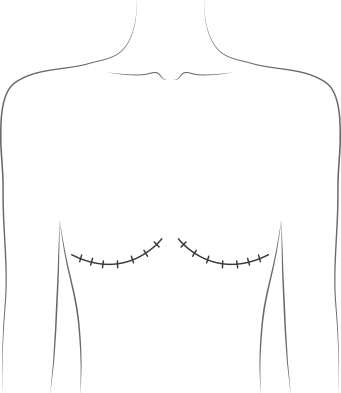By continuing to use our site, you consent to the processing of cookies, user data (location information, type and version of the OS, the type and version of the browser, the type of device and the resolution of its screen, the source of where the user came from, from which site or for what advertisement, language OS and Browser, which pages are opened and to which buttons the user presses, ip-address) for the purpose of site functioning, retargeting and statistical surveys and reviews. If you do not want your data to be processed, please leave the site.
The Voice of People With Breast Cancer
helping you understand your surgical options
SurgeryGuide
Jump to:
Making Decisions
One thing to remember when you are navigating through this process and the decision-making regime is that each patient is different, not every diagnosis is the same; therefore, the treatment is not the same. While you will be meeting many women who are going through their own process and whose treatment plan may vary from yours, the decision of care for each patient varies and is unique to each patient. Your plan is unique to you. For more help on deciding which breast cancer surgery is right for you, read CBCN Advocacy Guide: Deciding Which Breast Cancer Surgery is Right for You?
- Age as a deciding factor
-
Your overall health and age may be a considerable factor in making a decision around breast cancer surgery and what you choose to do after surgery. Additional surgeries for breast reconstruction may be considered higher risk depending on your age and overall health, this is an important consideration to discuss with your doctor.
- Geographical considerations
-
Your geographical location may also be a determining factor in what you choose when it comes to breast cancer surgery. It is usually recommended that you undergo radiation if you have a lumpectomy, which requires visiting your cancer centre 5 days a week for an average of 4 – 7 weeks. If you live far away from a cancer centre and need to stay away from home for this period of time this may be a consideration when choosing between a lumpectomy and mastectomy.
If you are considering reconstruction, you will need to understand what options are available to you based on the surgeons in your area. Or, if there is a certain type of breast reconstruction that you prefer, and it isn’t available in your area, you may need to consider travelling to another centre, or province.
- Breast density
-
It is important to understand whether or not you have dense breasts when making decisions about surgery as your breast density may impact surveillance and future screening for breast cancer. Dense breast tissue makes it harder to see cancer on a mammogram, which is why supplementary screening such as an ultrasound or an MRI is often recommended. If you have dense breast tissue, and are considering a lumpectomy or single mastectomy, you may want to consider what surveillance imaging options are available to you in the future. The recommendations and availability of different imaging options may differ from province to province, so be sure to discuss what surveillance options will be available to you to monitor your breasts after your cancer treatments with your surgeon.
If you are unaware of your breast density status, ask you surgeon or medical oncologist. Breast density can only be determined through imaging; your healthcare professional that has access to your mammogram, breast ultrasound or breast MRI, will be able to advise you whether or not you have dense breasts.
Lumpectomy VS Mastectomy
If you have a smaller tumour your surgeon may give you the options of having lumpectomy (breast conserving surgery) or a mastectomy. If you have a larger tumour relative to the size of your breast, or a later stage breast cancer your surgeon may indicate that mastectomy is the best option. What is the difference between a lumpectomy and mastectomy? What does the research say about long-term survival outcomes when looking at lumpectomy vs. mastectomy? The information below will help answer these questions.
Lumpectomy

Removes part of the breast tissue instead of the whole breast
- Also referred to as a Breast Conserving Surgery or Partial Mastectomy
- Allows you to keep most of your breast
-
Your breast may have a different, more irregular, shape depending on the size of the lumpectomy
- Reconstruction may be done depending on the size of the tumour removed
- Less invasive surgery, and a shorter recovery time than mastectomy
- Usually requires radiation after surgery
- May still end up with a mastectomy if the margins aren’t clear, meaning that cancer cells are still seen at the outer edges of the tissue that was removed

“I had a lumpectomy first and when the pathologist determined that he was not happy with the margins, the surgeon had to go in and remove more breast tissue. He called it a partial mastectomy. Frankly, given that I had very small breasts to begin with, there wasn’t much left after the second surgery, although it was not a mastectomy.
~Karen~
Mastectomy

Surgical removal of the entire breast
- Double mastectomy, or bilateral mastectomy, is the surgical removal of both breasts
- Single mastectomy is the surgical removal of one breast
- Surgeon may recommend this procedure for a variety of reasons such a larger tumour or later stage cancers, and more aggressive cancers or cancers that are harder to detect
- Longer procedure than lumpectomy
- Longer recovery time than lumpectomy

“The tumour in my breast was multi focal, which means that I had more than one tumour in my breast, and the largest tumour was 3cm. Therefore, my breast surgeon highly recommended a mastectomy. I opted for a bilateral mastectomy because I was young, and symmetry on both sides was important to me.
~Trisha~
Prophylactic Mastectomy

Surgical removal of the entire breast as a preventative measure. There is no cancer currently detected in the breast.
- Someone with a BRCA1/2 mutation as a way to reduce risk of breast cancer developing
- Someone deemed to be at "high risk" for breast cancer based on gene mutations other than BRCA1/2 or extensive family history
- Someone having a single mastectomy to remove breast cancer and prefers to reduce the risk of cancer developing in the other breast (read more about the risk of cancer patients developing cancer in the opposite breast)

“At the age of 18, I was diagnosed with the BRCA1 genetic mutation just as my mother, auntie, and sister before me. This meant that I was at high risk for contracting breast cancer.
~Quinn~
- Research on lumpectomy vs. mastectomy
-
For patients with a smaller tumour, where breast conserving surgery may be an option, studies have shown that having a mastectomy instead of breast conserving surgery does not affect or improve overall long-term survival. The decision on which route to choose should be discussed in length with your surgeon. You should feel comfortable with the decision you make.
Here’s the research published in the New England Journal of Medicine on lumpectomy vs mastectomy .
- Coverage for a prophylactic mastectomy
-
Prophylactic mastectomies are publicly funded for women who have a BRCA mutation or are considered high risk. The definition of high risk varies from province to province so you will need to discuss this with your health care provider to understand if you fall into this category.
Coverage for a prophylactic mastectomy for women who have cancer in one breast and would like to remove the other breast also varies from province to province. In most cases it is left to the patient and physician to decide if this is the best course of action for that person.





